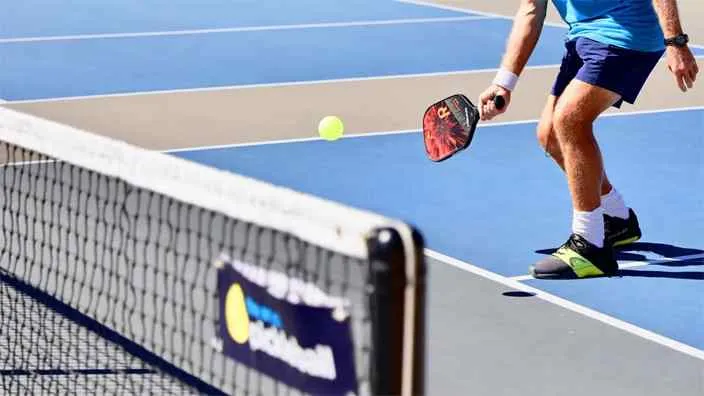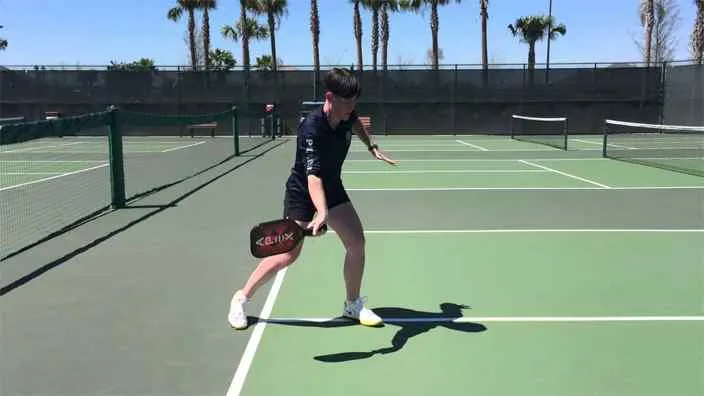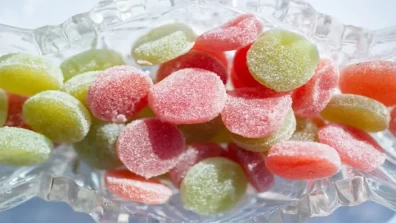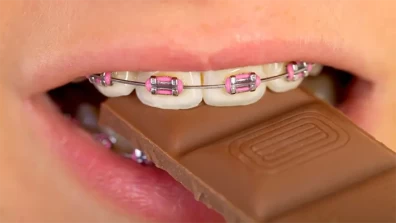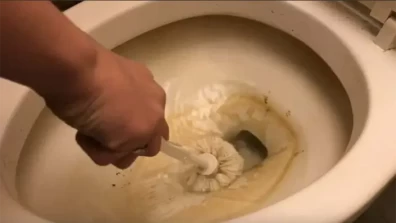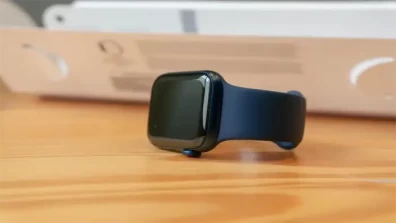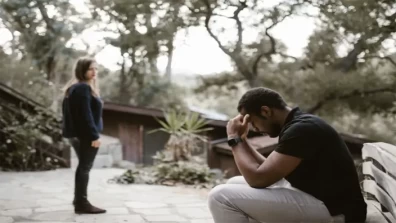From quick to controlled reactions, your forehand and backhand must be the smoothest. But both strokes require differences in grip, footwork, and torque to maximize control and power. With that said, continue reading our article so you can develop an equally strong forehand and backhand!
Neither stroke is better than the other - the forehand allows more natural power from full-body rotation while the backhand promotes control but is limited in pace. So, developing both strokes fully expands your shot variety and court coverage.
Table of Contents
- What Is A Forehand In Pickleball?
- What Is A Backhand In Pickleball?
- Is It Better To Hit A Forehand OR Backhand?
- When To Use A Backhand Return In Pickleball
- When To Use A Forehand Return In Pickleball
- Forehand Vs. Backhand Serve
- How To Hit A Pickleball Forehand?
- How To Hit A Backhand In Pickleball?
- Pros & Cons Of A Backhand
- Pros & Cons Of A Forehand
- Frequently Asked Questions
- Conclusion
What Is A Forehand In Pickleball?
The forehand is a pivotal stroke in pickleball, which is used for
- Commanding Returns
- Aggressive Groundstrokes
- Finesse Drops
- Touch Volleys Up At The Non-Volley Zone
It's performed on the paddle side of your dominant hand, and it requires a grip shift with your palm behind the paddle face at contact. Step towards the ball, rotate your torso, and swing forward across your body for topspin or slice. Here’s what you should do - lead with the paddle head and add zip. Against 4.2 million US pickleball players and rising, you'll need it!
What Is A Backhand In Pickleball?
Unlike the forehand's inside-out swing, the backhand starts with the paddle face behind you and sweeps forward on your non-dominant side. The grip adjusts slightly towards your fingers, adding stability to the two-hander. Step into the shot, keep your head still, and drive through the ball with your torso. Adding backspin brings a new dimension. With practiced footwork to align your shoulders, your backhand becomes a reliable shot for aiming for open-court corners. See, that wasn’t all that hard?!
Is It Better To Hit A Forehand OR Backhand?
When you return serve, using your forehand affords more natural power while the two-handed backhand offers more control. But alternating returns with your forehand and backhand keeps opponents guessing. For instance, disguise backhand returns starting forehand and vice versa. Don’t just rely on your forehand - keep mixing placements. Target weaknesses like the backhand to move your opponent out of position. Keep both strokes tuned up, as your pickleball success depends on your whole arsenal.
When To Use A Backhand Return In Pickleball
When facing a serve to your weak side, unleash your backhand prowess! Use the backhand return to handle the ball on the hip, redirect pace crosscourt, or powerfully drive down the line. Incorporate variety by mixing in backhand returns to keep opponents uncertain, and strategically reset the point with a well-placed, high backhand deep in the court. Master the backhand return to effectively handle serves, exploit angles, and make it a reliable shot through consistent practice!
When To Use A Forehand Return In Pickleball
When faced with a mid-court floater, capitalize on your forehand prowess for return winners. Utilize the natural power of your forehand to crush weak serves, delivering a potent and swinging return. Alternatively, add finesse to your game by executing a low skidding forehand slice, strategically setting up subsequent shots. The forehand return becomes your weapon of choice, allowing you to aggressively counterattack shorter balls and elevate your overall performance on the pickleball court.
Forehand Vs. Backhand Serve
It’s very crucial that you know the three main grip types and when to use them. This will have you holding court in no time!
1- Continental Grip
The Continental grip, also called the hammer grip, places your hand behind the paddle face in a handshake position. It works well for versatile strokes like forehands, backhands, volleys, and serves. The thumb presses forward for extra support. This grip balances power and touch.
2- Eastern Grip
Also called the Handshake Grip, it shifts the paddle into the palm of your hand for finger-tip control, like shaking hands normally. It excels on finesse shots like drop volleys plus backhand returns. Quick maneuvers and wrist flicks come easily with an Eastern grip.
3- Western Grip
The Western grip (frying pan grip) angles the paddle face severely with your palm rotated far under it. Tailored for forehands, this lets you whip the paddle head aggressively at contact for heavy topspin. The extreme wrist cock also aids in backhand slices.
Related Article: How To Clean Pickleball Shoes
How To Hit A Pickleball Forehand?
Generating power and control on your forehand takes practiced footwork and mechanics. Here are some tips to help you get started.
- Step Into It - Rotate your front foot back and step forward with your back foot as you swing.
- Make Contact - Lead with the paddle head shifting your weight forward and extending through the ball.
How To Hit A Backhand In Pickleball?
The backhand requires adjusting your stance and grip for optimal stability and aim.
- Squaring Up - Stand sideways with feet shoulder-width and grip paddle in fingers
- Twice As Nice - Use two hands for extra support and reduce grip changes
- Striding Forward - Step towards the ball with your dominant-side foot to meet the bounce
- Finishing Strong - follow through high to low across your body for topspin or slice
Pros & Cons Of A Backhand
The backhand gets overshadowed by the forehand sometimes, but it serves some slick purposes. Let's spotlight the pros and cons of the backhand.
Pros | Cons |
| Disguise - Starting forehand then sweeping a backhand wrongfoot opponents | Power Limits - The backhand swing path reduces natural power |
| Control - The two-handed backhand offers more stability and touch | Grip Changes - Switching grips between the forehand and backhand can cause errors |
| Court Coverage - Excellent for reaching wide balls on your weak side | Muscle Memory - The backhand technique doesn't get ingrained as easily |
At 4.8 million pickle-ballers, don't neglect your backhand - it complements the forehand beautifully!
Pros & Cons Of A Forehand
The forehand is often a pickleball player's best weapon. But overusing it has risks. What are the unique perks and pitfalls of relying on your forehand?
Pros | Cons |
| Power - The forehand swing leverages your body rotation for pace | Predictability - Opponents will cheat to the forehand if you always hit there |
| Reach - Ideal for hitting shots to your dominant side | Imbalance - Overdeveloping the forehand can leave the backhand behind |
| Versatility - Execute topspin drives, slices, touch shots | Fatigue - Constantly running around balls to hit forehands is tiring! |
The moral of the story is to nurture both your forehand and backhand equally. Variety is the spice of pickleball!
Frequently Asked Questions
Which One Is Better Backhand OR Forehand?
Neither stroke is inherently better - they serve different strategic purposes. Forehands allow more power while backhands provide control. Having both well-developed expands your shot-making options. Vary forehand and backhand placement rather than relying only on your forehand strength.
How Do You Hit A Forehand & Backhand In Pickleball?
On the forehand, use a continental grip, step forward with your opposite foot, rotate your torso, and swing the paddle forward across your body. For backhands, switch to an eastern grip, step towards the ball with the same-side foot, keep your head still, and sweep the paddle forward.
Why Is The Forehand More Powerful Than The Backhand?
The forehand utilizes internal body rotation and torque from the legs, hips, and shoulders rotating forward to whip the paddle head through contact. This kinetic sequence maximizes force production. The backhand relies more on arm swing strength as the body faces forward, reducing power.
Conclusion
With unwavering dedication, your pickleball game can reach new heights, marked by precision, directional finesse, and enhanced depth in your shots. The key lies in maintaining a dynamic approach—constantly alternating between forehands and backhands, incorporating spins or slices, and strategically targeting placements on the court. This versatility not only keeps your opponents off balance but provides you with a multifaceted arsenal. Remember, every nuanced edge in your playing style contributes to your overall success on the pickleball court. Stay committed to refining your techniques, and your game will continue to evolve, ensuring a competitive edge in every match.

